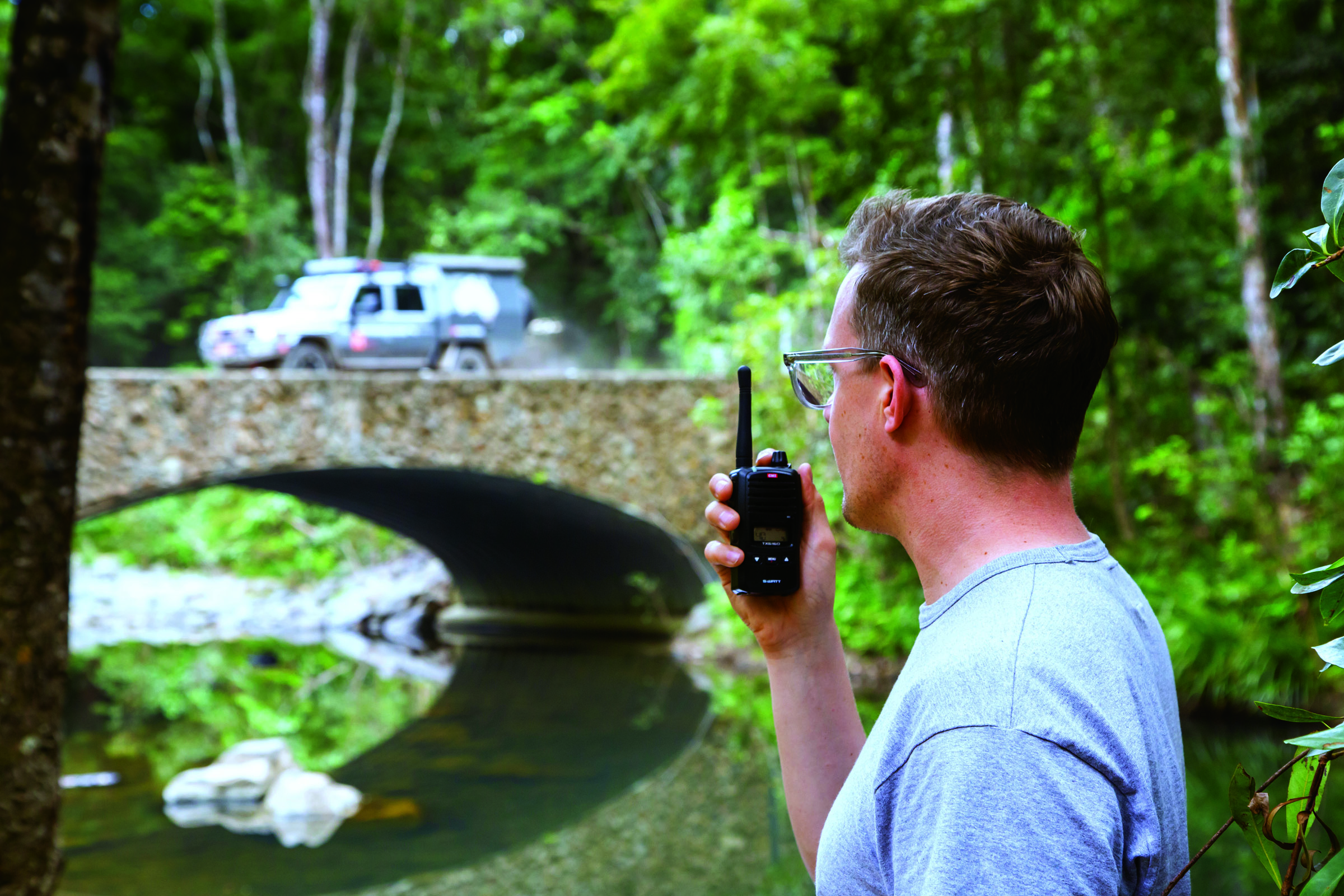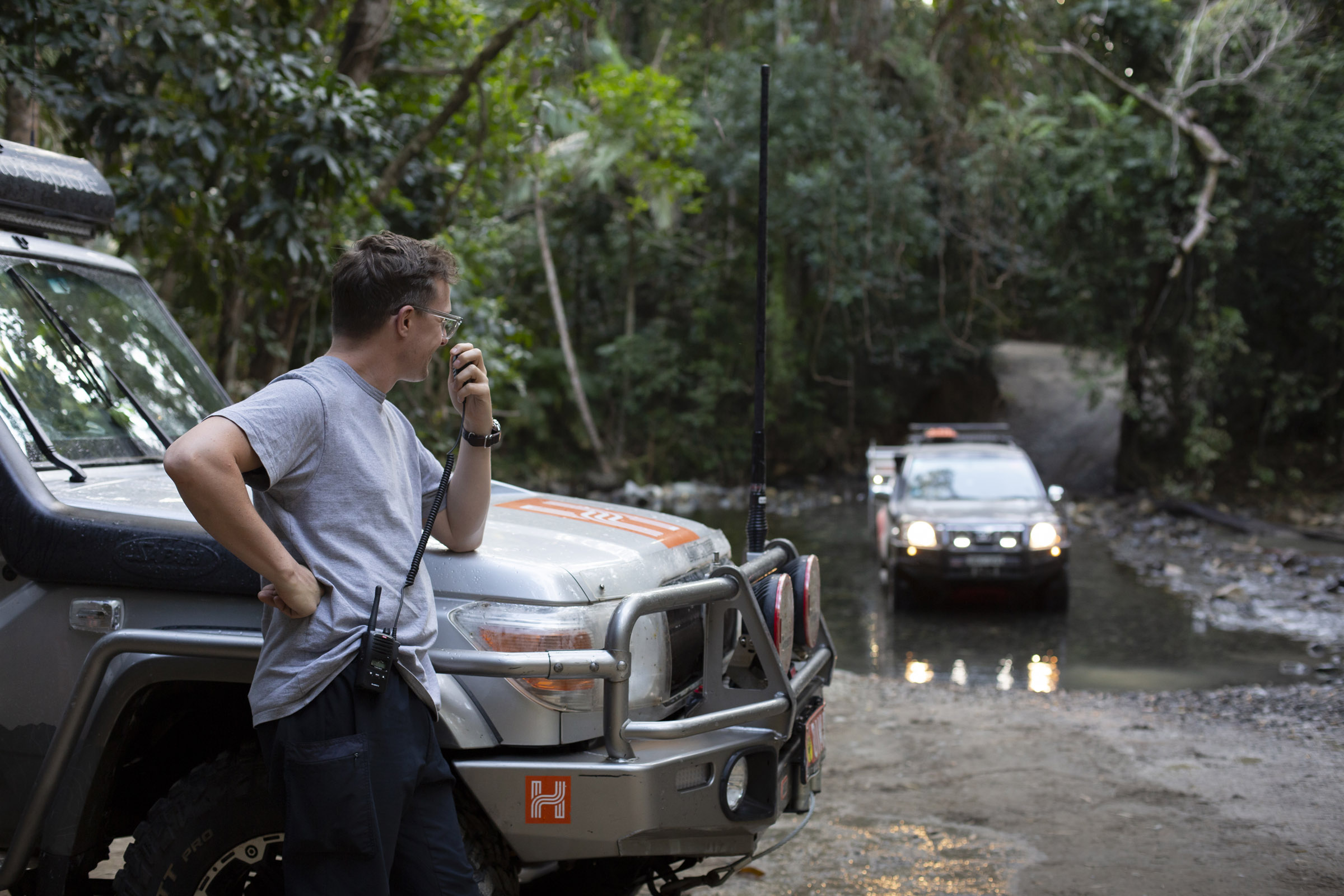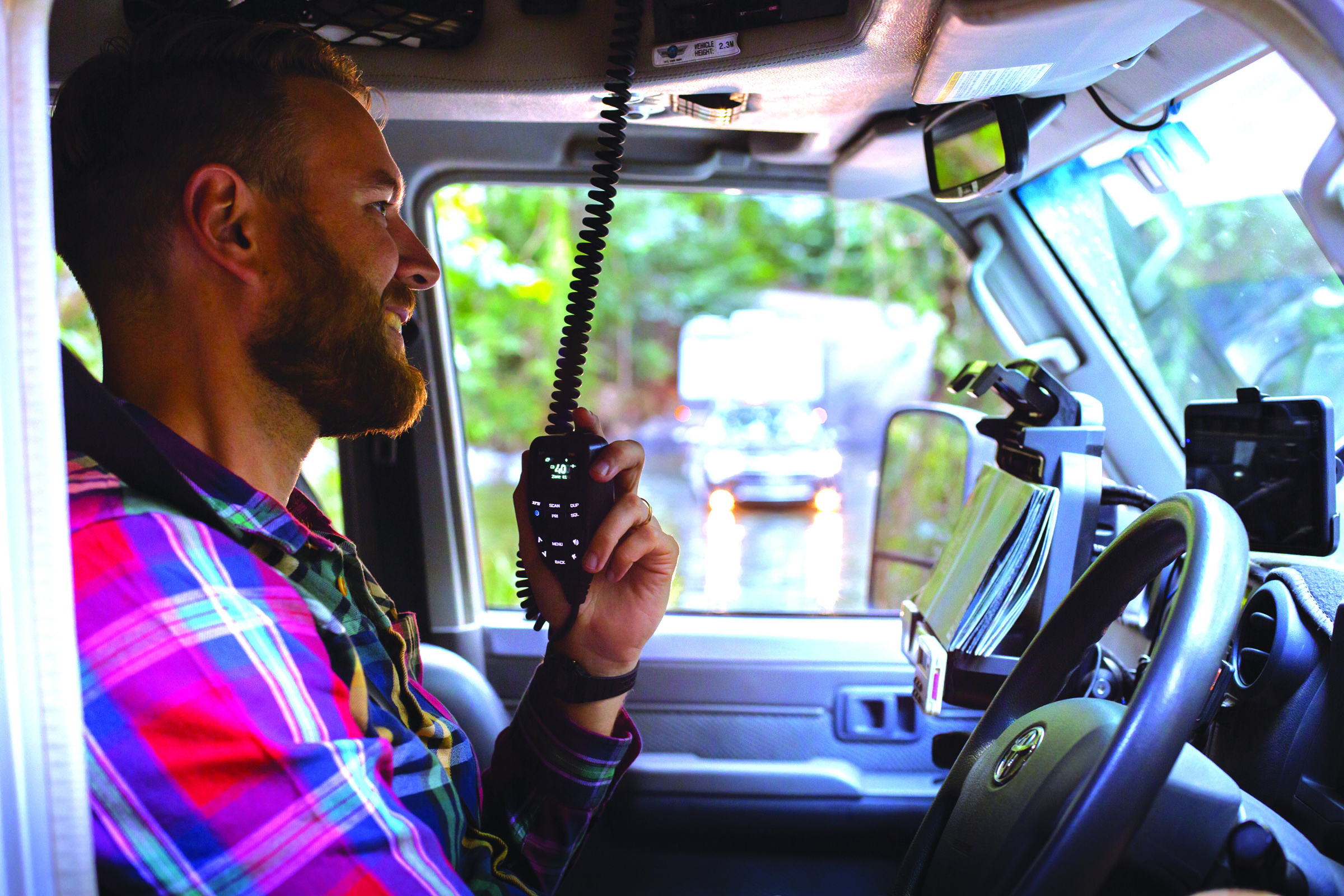We live in a world where communication and technology are continuously evolving. You wouldn’t be remiss for thinking that such runaway innovation has no room for the classics, such as UHF radio. But such an assumption is very much mistaken.
In the work we do at Camper, UHF radio is an invaluable tool for coordinating fieldwork, photoshoots and convoys. Thus, on a recent trip through the Daintree Rainforest I was pleased to hear that our lead vehicle had recently been set up with the latest kit from GME, the XRS Connect UHF radio — the XRS-370C Compact Hideaway model, to be exact.
At first glance, the XRS Connect system didn’t look all that different from any other radio we’ve worked with. Aside from a contemporary design notes and a clear anti-glare OLED display, the handset looked, felt and operated like a regular handset. When it began to chatter, the two-watt speaker embedded within the svelte handset let out a smooth, clear sound.







Digging around, I spied the GME brochure and with a couple of hours on the road ahead, I was glad for something to read. Having already heard that the new GME Connect radios come equipped with Bluetooth connectivity, I began to discover exactly what that translates to. In next to no time I’d installed the XRS Connect app onto my phone, I was connected, and I was exploring a strange new world of CB radio smartphone integration. The app itself is well designed and easy to navigate. GME are the first company in the world to produce this technology, so I’ll admit it took me a little while to wrap my head around how useful the various functions could be.
From the app, users can create and share multiple scan lists, with access to over 20,000 pre-loaded frequencies — including the entire Australian and New Zealand registered analogue database, which includes police, fire and emergency services. The system can also make use of the smartphone’s location services, allowing users to track their progress along maps, which can be cached for use offline; on top of this it can send and receive locations to other users.
What appeals to me most about the XRS Connect technology is that users aren’t purchasing a static product. Since many of the capabilities are accessed via smartphone app, it’s possible for the developers to include new functionality into any update. For instance, the latest firmware update includes a function called Active Mute, that mutes the radio when the user receives a phone call. This would make life a whole lot easier for anyone whose business is based behind a steering wheel — a truck driver, for example — who has to make and receive regular hands-free phone calls while they’re on the go. Another newly added function is Voice Playback, allowing users to record all the voice transmissions received from other radios, which can then be quickly and easily played back. It allows anyone who uses a radio in a loud vehicle or noisy space to play back messages, ensure they don’t miss calls and keep repetition to a minimum to avoid clogging up public channels.
On top of all that, the platform is open source, meaning that third party app developers can create compatible technology to bring their own ideas onto the platform. At this point it feels like the technology has a great deal of potential that’s yet to be realised, though I have no doubt there’s plenty more to come.
Ours was the only vehicle on our North Queensland sojourn equipped with the XRS Connect rig. Since much of the connected technology requires your travel partners to be on the same platform, I didn’t experience the full range of functions. Knowing that not all of our entourage were toting onboard radio systems, we’d also brought along a couple of GME’s TX6160TP handheld radios.
I’ve never thought of handheld radios as a substitute for an in-car set up. In my mind they’ve just been the thing you grab as you jump out of the car to guide the driver through a tricky section of track, or to tell them to slow down on the next pass so the photographer can get a better shot. But these little beauties pack a serious punch. The kit comes with a handy charging dock that powers up to 30 hours of battery life, driving five-watt transmission power with excellent range. The handsets and the very handy speaker microphone extensions are waterproof for use in the harshest conditions, while the overall build feels solid and tough. All in all, they’re a great addition to the arsenal and as good as the in-car units from only a few years ago.
By the end of the trip I’d discovered that GME have pushed UHF tech a long way in the last couple of years. The GME XRS Connect was a nifty bit of kit and has left me entertaining the idea of upgrading my own set-up. Considering that the XRS-330C Super Compact version starts at just $499, it’s entirely within reach. While it hasn’t quite realised its potential just yet, it does feature some handy functions, and will no doubt continue to evolve. For a technology that hasn’t changed a whole lot in a long time, GME’s XRS Connect is an exciting addition to the market.
GME XRS-370C XRS CONNECT COMPACT HIDEAWAY UHF CB — RRP: $549.00
GME TX6160TP UHF CB HANDHELD RADIO TWIN PACK — RRP: $579.95




